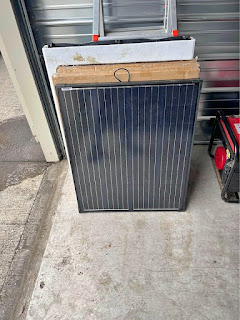Monocrystalline solar panels are a popular choice for residential and commercial solar installations due to their high efficiency and sleek appearance. There are different types of monocrystalline solar panels available in the market, each with its unique characteristics.
Standard Monocrystalline Solar Panels
Standard monocrystalline solar panels are made from high-purity silicon and have a uniform black or dark blue appearance. These panels typically have a higher efficiency rating than other types of solar panels, ranging from 15% to 22%. They are also durable and can last up to 25 years.
Premium Monocrystalline Solar Panels
Premium monocrystalline solar panels are manufactured using advanced technology and have higher efficiency ratings than standard monocrystalline panels. These panels have an efficiency rating of up to 24%, making them one of the most efficient types of solar panels available. They also come with additional features such as anti-reflective coating, which helps to increase energy output, and a sleeker appearance.
Back-Contact Monocrystalline Solar Panels
Back-contact monocrystalline solar panels are designed to be more efficient and to have a sleeker appearance. These panels have all their electrical contacts on the back, eliminating the need for visible electrical wiring on the front of the panel. This design also increases the efficiency of the panel as there is less shading on the front.
Shingled Monocrystalline Solar Panels
Shingled monocrystalline solar panels are a newer type of monocrystalline solar panel that uses a shingled design to increase efficiency. These panels have overlapping cells, which reduces the amount of space between cells and increases the amount of electricity that can be produced. Shingled panels can have an efficiency rating of up to 21%, making them a popular choice for residential solar installations.
Bifacial Monocrystalline Solar Panels
Bifacial monocrystalline solar panels are designed to capture sunlight from both sides of the panel, increasing their efficiency. These panels have a transparent backsheet that allows sunlight to pass through and be reflected off the surface below the panel, such as a roof or the ground. Bifacial panels can have an efficiency rating of up to 30%, making them one of the most efficient types of solar panels available.
Heterojunction Monocrystalline Solar Panels
Heterojunction monocrystalline solar panels are made using a combination of materials, such as silicon and thin layers of amorphous silicon. This design allows for a higher efficiency rating, as the thin layers help to reduce electron losses. These panels can have an efficiency rating of up to 23%.
Passivated Emitter Rear Cell (PERC) Monocrystalline Solar Panels
PERC monocrystalline solar panels have a special layer on the back of the cell that reflects any electrons that would otherwise be lost. This layer helps to increase the efficiency of the panel, and these panels can have an efficiency rating of up to 22%. PERC panels are also known for their durability and resistance to degradation over time.
In summary, there are various types of monocrystalline solar panels available, each with its unique advantages and characteristics. Understanding the different types can help you choose the best option for your specific solar installation needs.

Post a Comment for "Types of Monocrystalline Solar Panels"